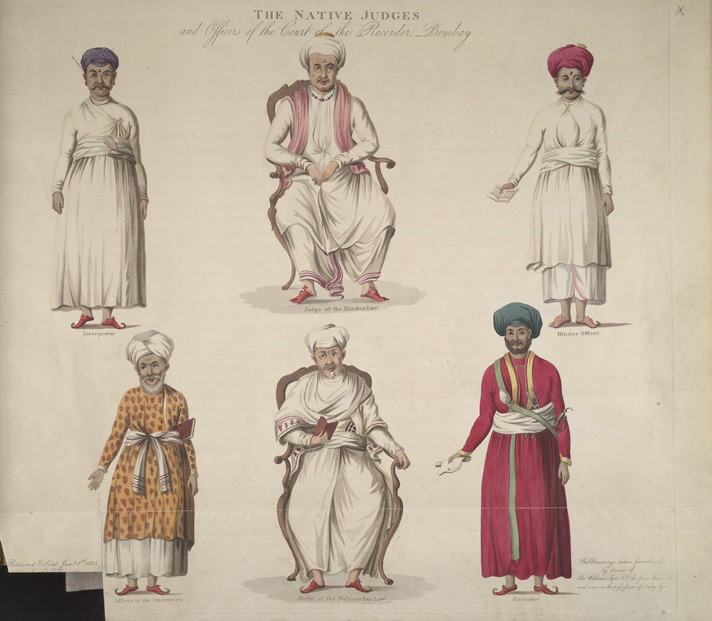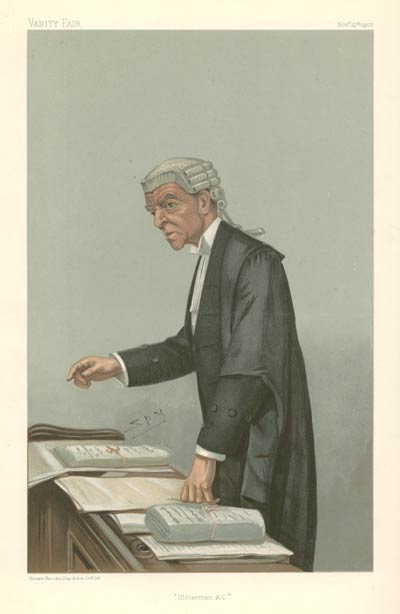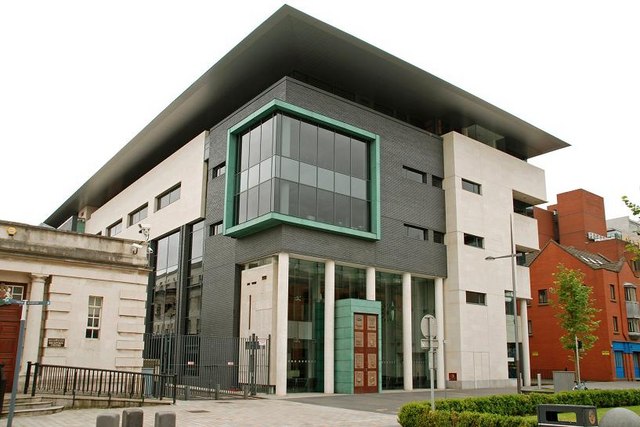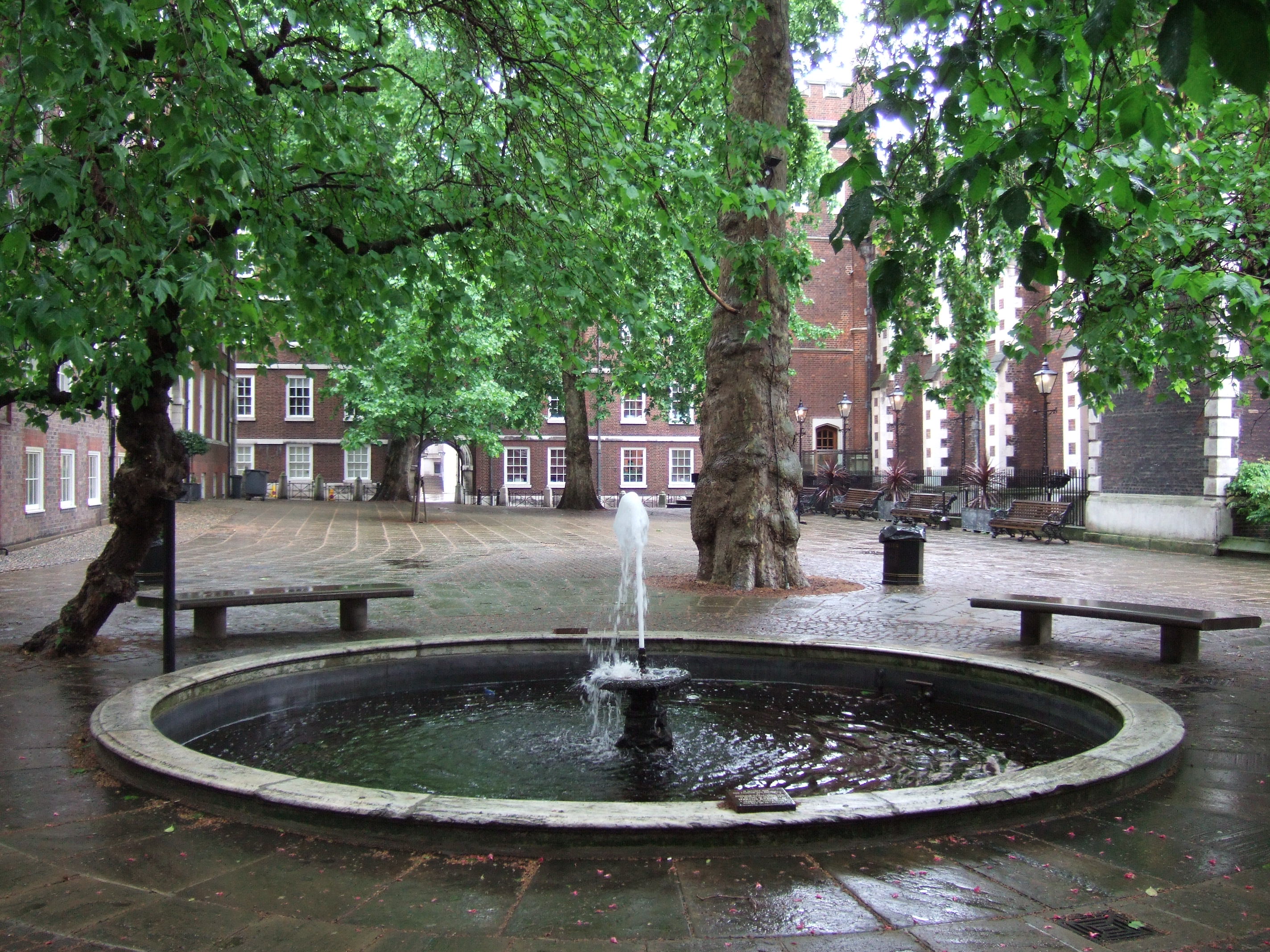|
Richard Pennefather (judge)
Richard Pennefather (1773–1859) was an Irish lawyer and judge of the nineteenth century, who enjoyed a reputation for legal ability and integrity. He has been highly praised, in particular, for his scrupulously-impartial conduct of the politically-sensitive Doneraile Conspiracy Trials of 1829. He was the elder brother of Edward Pennefather, Lord Chief Justice of Ireland. Family He was the eldest son of William Pennefather of Knockeevan, of Darling Hill, County Tipperary, who was a member of the Irish House of Commons for Cashel (Parliament of Ireland constituency), Cashel, and his wife, Ellen Moore, daughter of Edward Moore (Archdeacon of Emly), Edward Moore, Archdeacon of Emly, and his wife Ellen Dobson. They were a junior branch of the long-established Pennefather family of Newpark, County Tipperary. The family emigrated to Ireland in about 1665. One of his brothers was Edward Pennefather, who was also a distinguished barrister and judge, and ended his career as Lord Chief Jus ... [...More Info...] [...Related Items...] OR: [Wikipedia] [Google] [Baidu] |
Judge
A judge is a person who wiktionary:preside, presides over court proceedings, either alone or as a part of a Judicial panel, panel of judges. A judge hears all the witnesses and any other Evidence (law), evidence presented by the barristers or solicitors of the case, assesses the credibility and arguments of the parties, and then issues a ruling in the Case law, case based on their interpretation of the law and their own personal judgment. A judge is expected to conduct the trial wiktionary:impartial, impartially and, typically, in an in open court, open court. The powers, functions, method of appointment, discipline, and training of judges vary widely across different jurisdictions. In some jurisdictions, the judge's powers may be shared with a jury. In inquisitorial systems of criminal investigation, a judge might also be an examining magistrate. The presiding judge ensures that all court proceedings are lawful and orderly. Powers and functions The ultimate task of a judge is ... [...More Info...] [...Related Items...] OR: [Wikipedia] [Google] [Baidu] |
King's Inn
The Honorable Society of King's Inns ( ir, Cumann Onórach Óstaí an Rí) is the "Inn of Court" for the Bar of Ireland. Established in 1541, King's Inns is Ireland's oldest school of law and one of Ireland's significant historical environments. The Benchers of King's Inns award the degree of barrister-at-law necessary to qualify as a barrister be called to the bar in Ireland. As well as training future and qualified barristers, the school extends its reach to a diverse community of people from legal and non-legal backgrounds offering a range of accessible part-time courses in specialist areas of the law. King's Inns is also a centre of excellence in promoting the use of the Irish language in the law. History The society was granted a royal charter by King Henry VIII in 1541, 51 years before Trinity College Dublin was founded, making it one of Ireland's oldest professional and educational institutions. The founders named their society in honour of King Henry VIII of England a ... [...More Info...] [...Related Items...] OR: [Wikipedia] [Google] [Baidu] |
Conspiracy (crime)
In criminal law, a conspiracy is an agreement between two or more persons to commit a crime at some time in the future. Criminal law in some countries or for some conspiracies may require that at least one overt act be undertaken in furtherance of that agreement, to constitute an offense. There is no limit on the number participating in the conspiracy and, in most countries, the plan is the crime, so there is no requirement that any steps have been taken to put the plan into effect (compare attempts which require proximity to the full offense). For the purposes of concurrence, the ''actus reus'' is a continuing one and parties may join the plot later and incur joint liability and conspiracy can be charged where the co-conspirators have been acquitted or cannot be traced. Finally, repentance by one or more parties does not affect liability (unless, in some cases, it occurs ''before'' the parties have committed overt acts) but may reduce their sentence. An unindicted co-conspir ... [...More Info...] [...Related Items...] OR: [Wikipedia] [Google] [Baidu] |
Court Of Exchequer (Ireland)
The Court of Exchequer (Ireland) or the Irish Exchequer of Pleas, was one of the senior courts of common law in Ireland. It was the mirror image of the equivalent court in England. The Court of Exchequer was one of the four royal courts of justice which gave their name to the building in which they were located, which is still called the Four Courts, and in use as a Courthouse, in Dublin. History According to Elrington BallBall, F. Elrington. ''The Judges in Ireland 1221–1921''. London: John Murray, 1926 the Irish Court of Exchequer was established by 1295, and by 1310 it was headed by the Chief Baron of the Irish Exchequer, assisted by at least one associate Baron of the Exchequer. The Court seems to have functioned for some years without a Chief Baron. Sir David de Offington, former Sheriff of County Dublin, was appointed the first Baron in 1294, followed by Richard de Soham the following year, and William de Meones in 1299. The first Chief Baron was Walter de Islip, an ... [...More Info...] [...Related Items...] OR: [Wikipedia] [Google] [Baidu] |
King's Counsel
In the United Kingdom and in some Commonwealth countries, a King's Counsel (post-nominal initials KC) during the reign of a king, or Queen's Counsel (post-nominal initials QC) during the reign of a queen, is a lawyer (usually a barrister or advocate) who is typically a senior trial lawyer. Technically appointed by the monarch of the country to be one of 'His erMajesty's Counsel learned in the law', the position originated in England and Wales. Some Commonwealth countries have either abolished the position, or renamed it so as to remove monarchical connotations, for example, ' Senior counsel' or 'Senior Advocate'. Appointment as King's Counsel is an office, conferred by the Crown, that is recognised by courts. Members have the privilege of sitting within the inner bar of court. As members wear silk gowns of a particular design (see court dress), appointment as King's Counsel is known informally as ''receiving, obtaining,'' or ''taking silk'' and KCs are often colloquially ... [...More Info...] [...Related Items...] OR: [Wikipedia] [Google] [Baidu] |
Court Of Chancery (Ireland)
The Court of Chancery was a court which exercised equitable jurisdiction in Ireland until its abolition as part of the reform of the court system in 1877. It was the court in which the Lord Chancellor of Ireland presided. Its final sitting place was at the Four Courts in Dublin, which still stands. History The Chancery in Ireland was set up in 1232, following the model of the Court of Chancery of England. The court was abolished under the Supreme Court of Judicature Act (Ireland) 1877 and its jurisdiction transferred to the Chancery Division of the newly established High Court of Justice in Ireland, while the Lord Chancellor presided over the Court of Appeal in Ireland. In 1920, the High Court was split into separate courts for Northern Ireland and Southern Ireland under the Government of Ireland Act 1920. While the Northern Ireland court still maintains a separate Chancery Division, the Irish Free State abolished the divisions of the High Court under the Courts of Justice ... [...More Info...] [...Related Items...] OR: [Wikipedia] [Google] [Baidu] |
Irish Bar
The Bar of Ireland ( ga, Barra na hÉireann) is the professional association of barristers for Ireland, with over 2,000 members. It is based in the Law Library, with premises in Dublin and Cork. It is governed by the General Council of the Bar of Ireland, which was established in 1897. The Council is composed of twenty-five members: twenty who are elected, four co-opted, and the Attorney-General, who holds office ''ex officio''. Every year, ten members are elected for two-year terms; five by senior counsel and five by junior counsel. The Bar of Ireland funds the Law Library, which has premises in Dublin in the Four Courts, Church Street, and the Criminal Courts of Justice, and also a smaller library in Cork. Nearly all barristers practicing in Ireland are members of the Law Library, which is often used as a metonym for the Irish barrister profession itself. Before the creation of the Bar of Ireland in 1897, barristers in Ireland were only loosely organised through their occu ... [...More Info...] [...Related Items...] OR: [Wikipedia] [Google] [Baidu] |
Middle Temple
The Honourable Society of the Middle Temple, commonly known simply as Middle Temple, is one of the four Inns of Court exclusively entitled to call their members to the English Bar as barristers, the others being the Inner Temple, Gray's Inn and Lincoln's Inn. It is located in the wider Temple area of London, near the Royal Courts of Justice, and within the City of London. History During the 12th and early 13th centuries the law was taught, in the City of London, primarily by the clergy. But a papal bull in 1218 prohibited the clergy from practising in the secular courts (where the English common law system operated, as opposed to the Roman civil law favoured by the Church). As a result, law began to be practised and taught by laymen instead of by clerics. To protect their schools from competition, first Henry II and later Henry III issued proclamations prohibiting the teaching of the civil law within the City of London. The common law lawyers migrated to the hamlet of ... [...More Info...] [...Related Items...] OR: [Wikipedia] [Google] [Baidu] |
University Of Dublin
The University of Dublin ( ga, Ollscoil Átha Cliath), corporately designated the Chancellor, Doctors and Masters of the University of Dublin, is a university located in Dublin, Ireland. It is the degree-awarding body for Trinity College Dublin. It was founded in 1592 when Queen Elizabeth I issued a charter for Trinity College as "the mother of a university", thereby making it Ireland's oldest operating university. It was modelled after the collegiate universities of Oxford and of Cambridge, but unlike these other ancient universities, only one college was established; as such, the designations "Trinity College" and "University of Dublin" are usually synonymous for practical purposes. The University of Dublin is one of the seven ancient universities of Britain and Ireland. It is a member of the Irish Universities Association, Universities Ireland, and the Coimbra Group. History The University of Dublin was modelled on the University of Oxford and the University of Cam ... [...More Info...] [...Related Items...] OR: [Wikipedia] [Google] [Baidu] |
Clonmel
Clonmel () is the county town and largest settlement of County Tipperary, Ireland. The town is noted in Irish history for its resistance to the Cromwellian army which sacked the towns of Drogheda and Wexford. With the exception of the townland of Suir Island, most of the borough is situated in the civil parish of "St Mary's" which is part of the ancient barony of Iffa and Offa East. Population The 2016 Census used a new boundary created by the Central Statistics Office (CSO) to define the town of Clonmel and Environs resulting in a population figure of 17,140. This new boundary omitted part of the Clonmel Borough Boundary which the CSO had defined as Legal Town for the 2011 census 11.55 km/sq. All of the 2011 census CSO environs in Co Waterford have been omitted as well as parts of CSO environs of Clonmel in Co Tipperary. The CSO as part of the 11 May 2017 release of data compared their new 2016 CSO boundary with its population of 17,140 with the 2011 CSO Clonmel Environ ... [...More Info...] [...Related Items...] OR: [Wikipedia] [Google] [Baidu] |
Portarlington, County Laois
Portarlington, historically called Cooletoodera (from ), is a town on the border of County Laois and County Offaly, Ireland. The River Barrow forms the border. The town was recorded in the 2016 census as having a population of 8,368. History Portarlington was founded in 1666, by Sir Henry Bennet, who had been Home Secretary to Charles II and to whom that King, on his restoration, had made a grant of the extensive estates of Ó Díomasaigh, Viscount Clanmalier, confiscated after the Irish Rebellion of 1641. After some difficulties, the grant passed to Sir Henry Bennet of all the Ó Díomasaigh lands in the King's and Queen's Counties, and on 14 April 1664 he was created Baron Arlington of Harlington in the County of Middlesex. So great was the anxiety of these new settlers to efface all ancient recollections in Ireland, that the Parliament of Orrery and Ormond enacted that the governor and council should be able to give new English names instead of the Irish names of ... [...More Info...] [...Related Items...] OR: [Wikipedia] [Google] [Baidu] |
William Tinsley (architect)
William Tinsley (7 February 1804 – 14 June 1885) was an Irish architect who immigrated to the United States in 1851. He and his family settled in Cincinnati where Tinsley received commissions to design several prestigious buildings in the Midwestern United States. Ireland William, the younger son of Thomas Tinsley and Lucy Brough, was born in Clonmel, County Tipperary. In about 1820 he entered the family building business. Although baptised into the Church of Ireland, Tinsley converted to Methodism at the age of twenty-one. Following the death of his father in 1825, William took over the company and received several commissions from local landowners: most notably he rebuilt Darling Hill, seat of the Pennefather family. He studied the designs of church architect James Pain, and was made the official architect for the Diocese of Lismore on Pain's death. Tinsley designed the chapter house of St. John's Cathedral, Cashel, which housed the Bolton Library. United States In 1851, ... [...More Info...] [...Related Items...] OR: [Wikipedia] [Google] [Baidu] |

.jpg)






